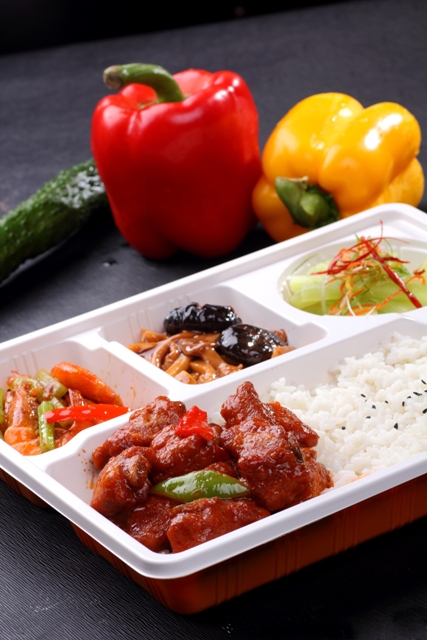Restaurant Market in China: Mass Consumption Is the Main Force
China’s food and beverage market are steadily rising due to the rapid development of the mass restaurant market. Intelligent equipment is in general in restaurants. Compared to the traditional preference of expensive ingredients, an increasing amount of Chinese customers tends to pay more attention to food health and dining environment. With the help of Internet, the food delivery industry continues to flourish.
Restaurant and Beverage Market in China
According to a recent research, the latest data show that in 2015 the national food and beverage revenue for the first time exceeded 3 trillion Yuan with an increase of 11.7% annually. By the end of 2012, after the introduction of the provisions of the central eight which forbid public funds and luxury consumption by government officials, bubbles in high-grade restaurant market burst, leading to a revolution in the restaurant market. In 2013, the China’s food and beverage revenue growth rate dropped down to 9% of the lowest percentage since the reform and opening-up. At the end of 2013, China’s restaurant industry changed to return a more natural and rational consumption.
In recent years, the steady development of China’s restaurant market shows that mass restaurant market demand has been the biggest power in the industry contrarian rebound. Recent data shows that in 2015 the mass restaurant market share has exceeded 80% of total restaurant market. According to the Chinese Cuisine Association statistics, in the past, the top 100 restaurants were basically high-end catering, yet there are currently 19 fast-food companies among top 100, operating income accounted for nearly 40% of the total sales revenue of the country’s top 100 catering.
Features of Restaurant Market in China
Small shops are opened with big backgrounds which show a comprehensive extension of the industrial chain. As one of the china’s time-honored brand, Quan Ju De has developed side products which will be sold in its own small shops named Jing Dian Grocery. In 2014, the food processing industry has accounted for 74% of its total revenue, more than 1 billion Yuan.
Chain operations in Chinese restaurant market have become balance. For instance, founded in Hangzhou, the Grandma’s Restaurant owns an affordable price level with an exquisite fashion in a dining environment. At present, Grandma’s group established in more than 60 cities has launched more than a dozen sub-brands and the number of its chain stores across the country is more than 160.
Intelligent restaurants have been seen with the universal use of the iPad and Wechat to order meals. Electronic screen instead of yelling at the waiter. It will automatic display the member’s name and order, and the customer could even receive a discount. Guests can serve themselves by the self-service ordering machine with no need to wait for ages.
Chinese Policies
In 2014, the Ministry of Commerce issued Guiding Opinions on Accelerating the Development of Mass Catering, which required that within five years, a sound mass restaurant service system should be established, and increase the percentage of mass restaurants from 80% currently to more than 85%, and puts forward 21 guidance measures. In 2015, this policy has been carried out in Hangzhou, Guangzhou, and Chengdu to optimize the development environment of the restaurant industry. Pilot cities should take measures to simplify the administrative examination of approval, reduce the burden on enterprises tax, and other measures to guide restaurant enterprises to meet the public needs and provide them with affordable special services.
Delivery food APPs are booming
 China’s food and beverage market have a great potential. From online orders to the off-line shipping of food and beverage O2O model, its market size has exceeded 130 billion with online users exceeded 200 million. A recent from Daxue Consulting, shows that ordering ratio through the internet such as APPs has reached 40% of total. With the continuous deepening of the Internet in restaurant O2O market, its size will continue to expand as take-out is an important branch of O2O dining. It now also gain more and more consumer and spread to the second tier and third tier cities.
China’s food and beverage market have a great potential. From online orders to the off-line shipping of food and beverage O2O model, its market size has exceeded 130 billion with online users exceeded 200 million. A recent from Daxue Consulting, shows that ordering ratio through the internet such as APPs has reached 40% of total. With the continuous deepening of the Internet in restaurant O2O market, its size will continue to expand as take-out is an important branch of O2O dining. It now also gain more and more consumer and spread to the second tier and third tier cities.
The white-collar market has been the main battlefield of the takeaway platform market. Daxue’s recent data show that the sales of Baidu “Waimai” (In Chinese百度外卖), its delivery service have been ranked the first among the white-collar market. In 2015, the number of merchants settled in this platform has increased by 67% compared to 2014, which apparently shows the high profitability of the takeaway platform from traditional restaurants.
High-end restaurant gradually transforms to the mass market, starting by joining the takeaway platform to provide side products. In Hubei, the brand Prince Xuan, and other high-end brand food restaurant also began to start a takeaway and package services. In recent years, competitions in the restaurant industry are still fierce and high-end food and beverage is still weak. On the contrary, the takeaway sales in high-end restaurant continue to rise. Brand restaurants focus on quality and consumer’s confidence, which is the biggest benefit of this market.
See also:
See our latest post on our Facebook page, follow us to stay up to date about China’s market:
#China’s leading development in #O2O, and it’s still growing. Why, and who are the key players? <http://bit.ly/O2O-business-china>
Posted by Daxue Consulting China on Wednesday, August 26, 2015














